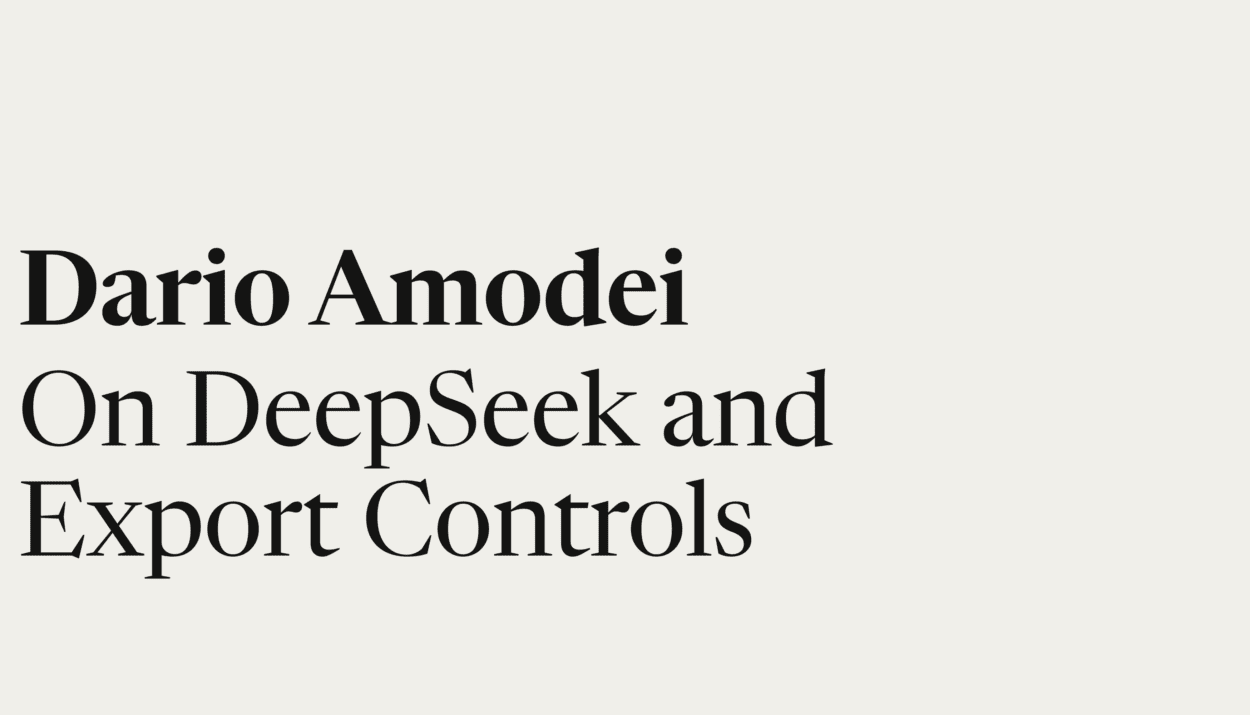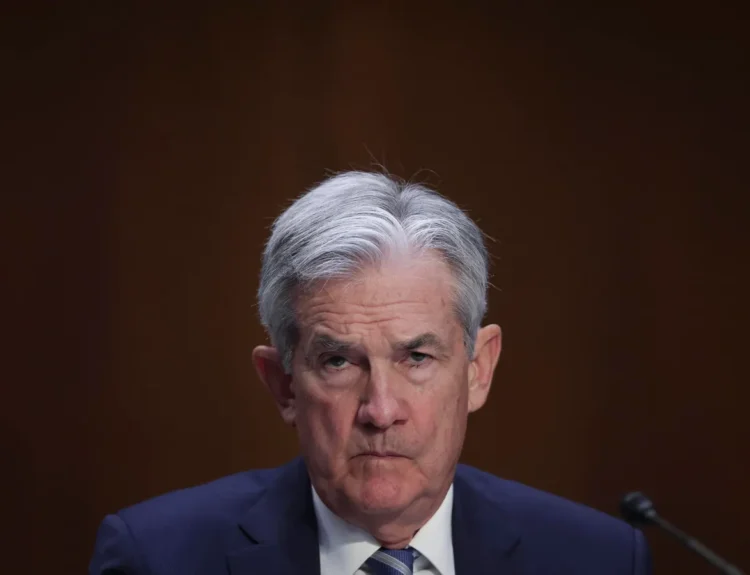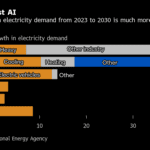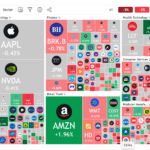The emergence of DeepSeek as a formidable AI player has sparked concerns in both U.S. AI policy and export control strategies. While some argue that China’s AI advancements undermine the case for restricting chip exports, others, including AI experts and policymakers, believe that DeepSeek’s rise makes stronger export controls more necessary than ever.
This article examines DeepSeek’s technological advancements, how AI development costs are evolving, and why export restrictions on AI chips remain crucial for maintaining U.S. leadership in AI.
Understanding AI Scaling and Efficiency Gains
Three key dynamics shape how AI models improve over time:
1. Scaling Laws: More Compute = Better AI
- AI models improve predictably as more computing power is used to train them.
- More expensive training typically leads to higher performance across cognitive tasks.
- AI leaders like OpenAI and Anthropic follow this rule by investing heavily in larger-scale models.
2. Efficiency Gains: Lower Cost, Same Performance
- Companies continuously find ways to optimize AI training and make it cheaper.
- For example, algorithmic improvements allow firms to train high-performance models at lower costs.
- AI costs typically drop 4x per year, meaning a model that costs $100M today may only require $25M next year.
3. Shifting the Paradigm: New Training Methods
- Reinforcement learning (RL) is now a crucial addition to AI training.
- OpenAI’s o1 model and DeepSeek’s R1 both use reinforcement learning to enhance reasoning abilities.
- This is early-stage technology, meaning small investments can yield massive performance gains.
DeepSeek’s AI Progress: A Disruption or Expected Evolution?
DeepSeek’s V3 and R1 models have fueled debate over China’s AI capabilities, with many citing their low-cost development as evidence that U.S. AI firms are falling behind. However, a deeper look suggests otherwise:
DeepSeek-V3: A Technological Leap
- V3 was trained using engineering innovations that optimized hardware usage.
- Key-value cache management and Mixture-of-Experts (MoE) techniques helped cut training costs significantly.
- Despite this, Claude 3.5 Sonnet and GPT-4o still outperform DeepSeek-V3 on key AI tasks.
DeepSeek-R1: Riding the Reinforcement Learning Wave
- R1’s success was largely expected given recent advancements in RL training.
- It matches OpenAI’s o1 model in some areas but is not groundbreaking in terms of AI capabilities.
- The real innovation was V3, while R1 is simply a logical next step in AI scaling trends.
Is DeepSeek’s Cost Advantage Real?
- DeepSeek claims R1 was trained for just $6M, compared to the billions spent by U.S. AI firms.
- However, Claude 3.5 Sonnet cost tens of millions to train—not billions.
- Given expected cost declines (4x per year), DeepSeek’s efficiency gains are not outside normal trends.
Export Controls: Why They Are More Important Than Ever
Does DeepSeek’s Success Mean Export Controls Failed?
- No. DeepSeek’s models were trained on tens of thousands of advanced AI chips.
- These H100, H800, and H20 chips were acquired before new U.S. export bans took effect or through smuggling.
- The fact that China does not have access to millions of cutting-edge chips proves that export controls are working.
The Risks of a Bipolar AI World
- If China can acquire millions of AI chips, we could enter a bipolar AI arms race.
- This would allow China to apply AI to military technologies at an unprecedented scale.
- U.S. intelligence and defense officials warn that China’s AI strategy prioritizes military dominance, making export controls essential.
Can Smuggling Get China the Chips It Needs?
- No. Small-scale smuggling is possible, but hiding $10B–$100B worth of chips is much harder.
- China’s own chip manufacturing is far behind NVIDIA’s H100-class GPUs.
- If export controls remain strict, China may struggle to reach the millions of chips required for frontier AI models.
Conclusion: AI Policy and National Security Are Intertwined
DeepSeek’s advancements do not invalidate U.S. export controls. Instead, they reinforce the need to restrict China’s AI progress.
Without export controls:
✅ China could train AI models at U.S. scale.
✅ AI-driven military advancements could accelerate.
✅ The U.S. would lose its technological advantage in the AI race.
By maintaining strict export restrictions, the U.S. and its allies can:
✔️ Preserve their lead in AI research and development.
✔️ Ensure AI is used responsibly rather than for authoritarian control.
✔️ Maintain long-term strategic dominance over China in the AI revolution.
In short: DeepSeek’s emergence isn’t a reason to relax export controls—it’s a reason to strengthen them.
Source: 🔗 Dario Amodei: On DeepSeek and Export Controls
Related articles:
NVIDIA: Is the DeepSeek Sell-Off a Wake-Up Call for AI Bulls?
How DeepSeek and Ozempic Are Disrupting Decarbonization Forecasts
What Is DeepSeek and Why Is It Crashing AI Stocks?
US Investigates Whether DeepSeek Illegally Acquired Nvidia Chips via Singapore Distributors
Alibaba, releases Qwen2.5-Max, AI model that they claim is better than DeepSeek, ChatGPT, and Meta
DeepSeek shows how Trump tariffs doomed to fail
DeepSeek Causes $1 Trillion Drop in Tech Stocks
Why market panic over China’s DeepSeek is ‘overblown,’ analysts say
DeepSeek ban coming soon? White House “looking into” national security implications of it










